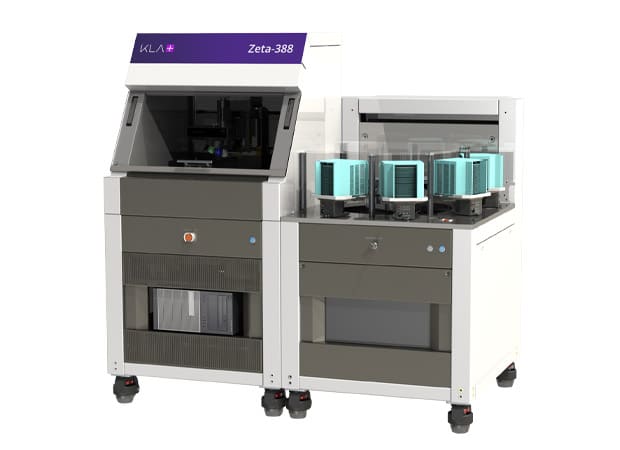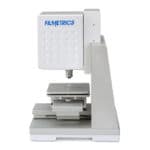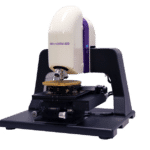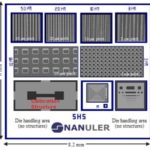Perfilómetro óptico automatizado, muestra grande
Hasta 6 técnicas en 1!
Zeta-388
1. Para la industria
2. Medición automatizada
3. Topografía 3D de alta resolución en color incluso en muestra transparente
4. Interferométrica: luz blanca VSI - Nomarski - PSI
5. Espesor de capas delgadas transparentes.
El Zeta-388 ofrece capacidad de metrología e imágenes en 3D, combinado con una mesa de aislamiento integrada y un sistema de procesamiento de obleas de casete a casete para mediciones completamente automatizadas. El sistema funciona con la tecnología ZDot ™, que recopila simultáneamente datos 3D de alta resolución y una imagen de enfoque infinito de color verdadero. El Zeta-388 admite entornos de investigación y desarrollo y producción con óptica multimodo, software fácil de usar, bajo costo de propiedad y comunicaciones SECS / GEM.
Aplicaciones en perfilometría óptica.
- Altura de paso: altura de paso 3D desde nanómetros a milímetros
- Textura: rugosidad 3D y ondulación en superficies lisas a muy rugosas
- Forma: arco y forma 3D
- Restricción: restricción de película delgada 2D
- Espesor de la película: espesor de la película transparente de 30 nm a 100 µm.
- Inspección de defectos: captura de fallas mayores de 1 µm
- Verificación de fallas: los archivos KLARF se utilizan para buscar fallas con el fin de medir la topografía en la superficie
- 3D o para localizar fallas.
- Altura de los pasos
- Espesor de la película
- Textura: rugosidad y ondulación.
- Forma: arco y forma
- Estrés: el estrés de las capas delgadas.
- Inspección automatizada de fallas
- Examen de fallas
- Células solares fotovoltaicas
- Empaque de semiconductores y semiconductores
- compuestos.
- Circuito impreso (PCB) y PCB flexible
- Ablación laser
- microfluidos
- Biotecnología
- Almacenamiento de datos
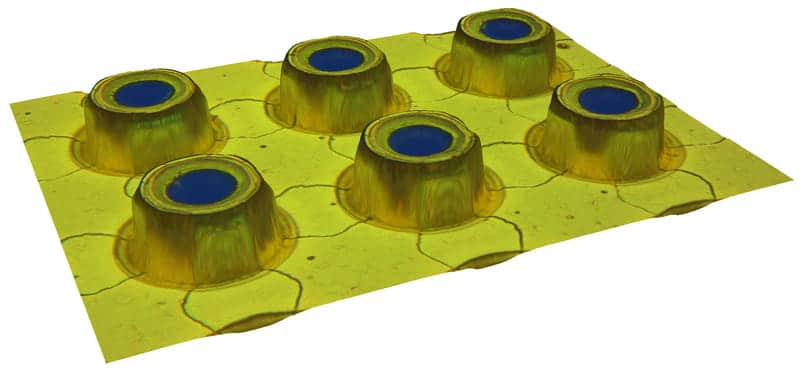
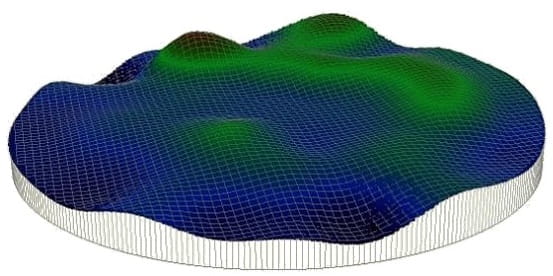
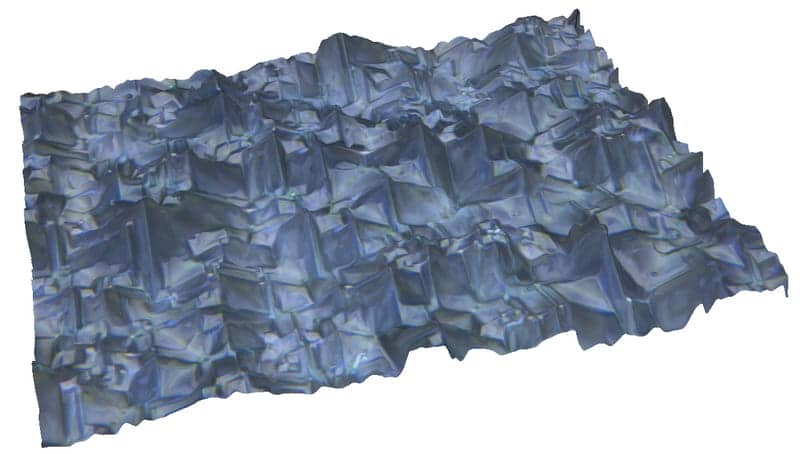
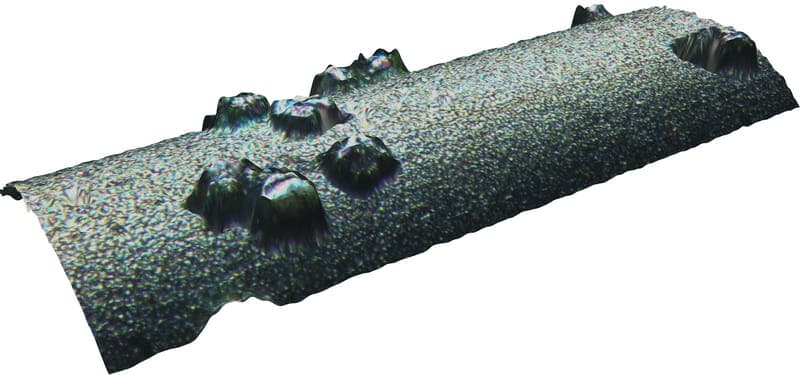

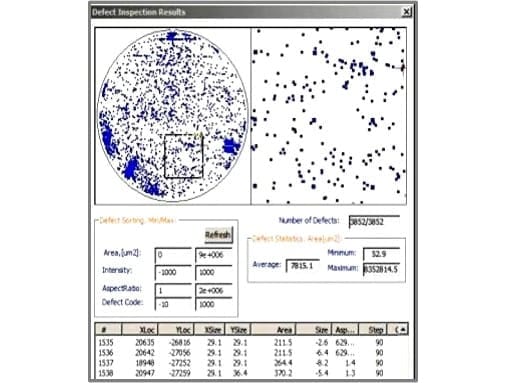
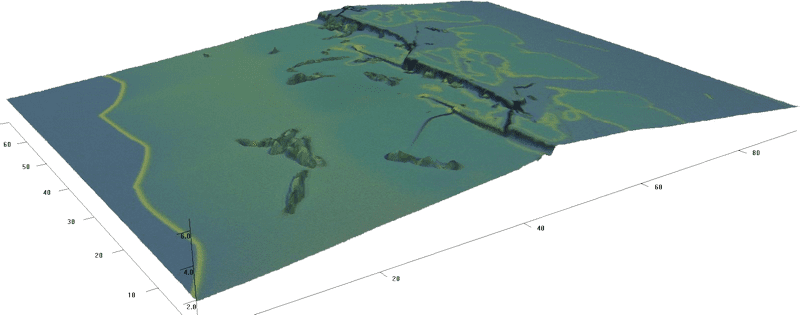
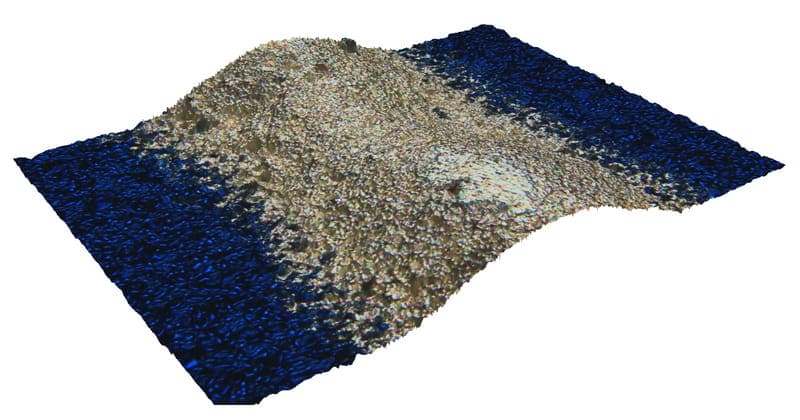
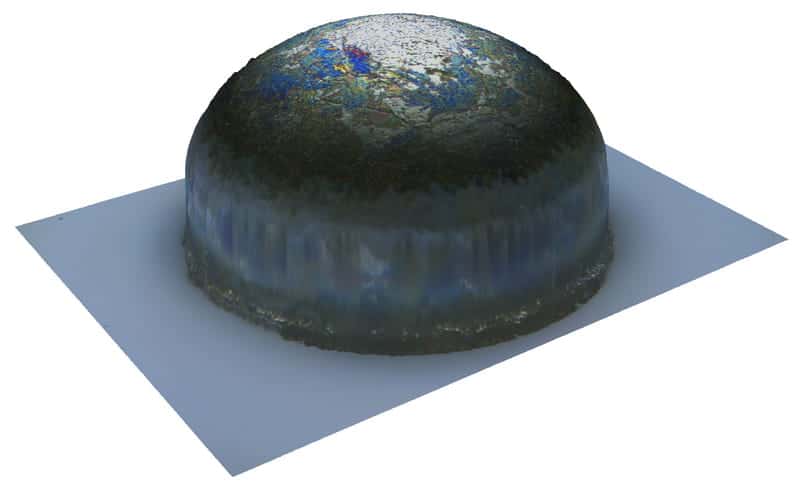
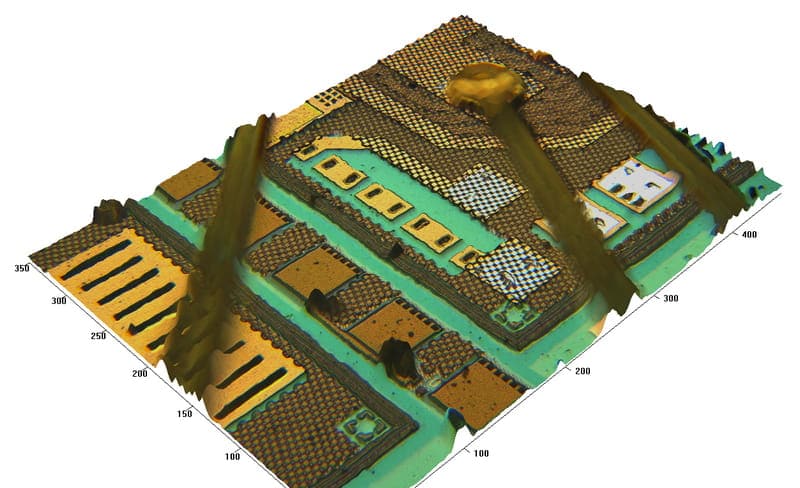
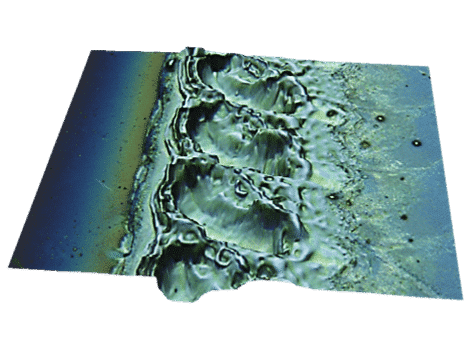
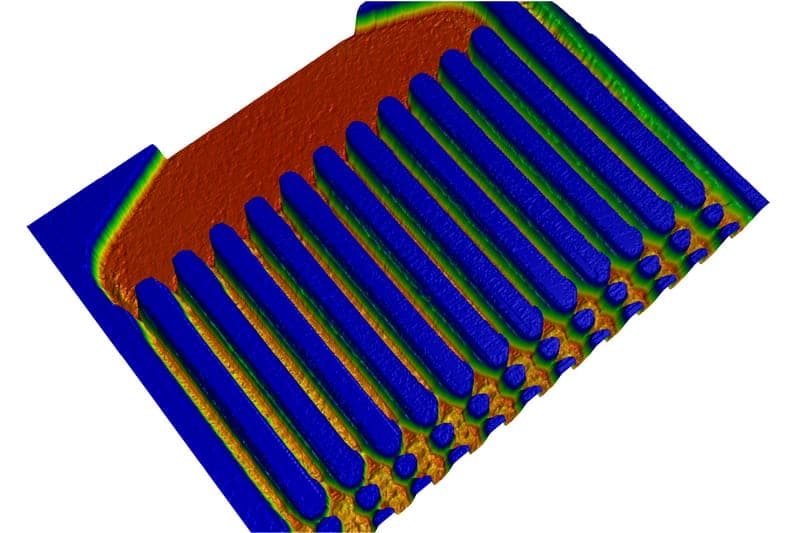
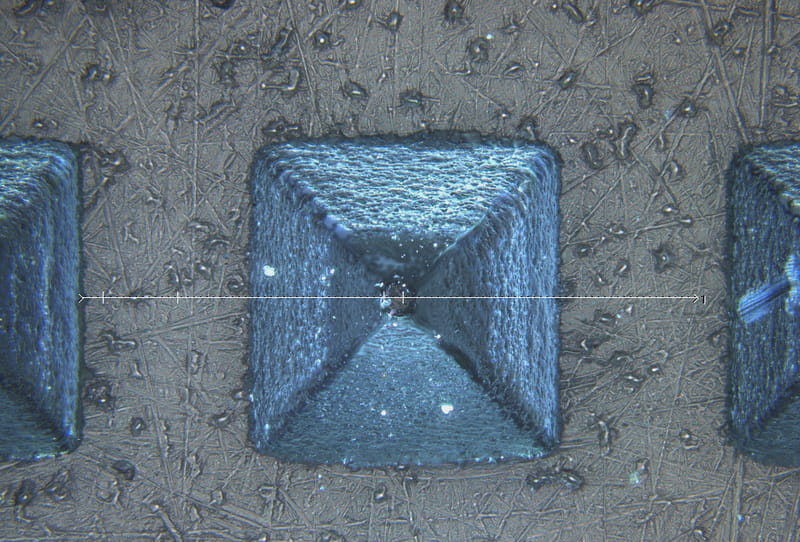
Industrias
- LED: diodos emisores de luz y PSS (sustratos de zafiro estampados)
- Semiconductores y semiconductores compuestos
- Semiconductor WLCSP
- FOWLP semiconductor (embalaje en almohadillas ventiladas)
- PCB (circuito impreso) y PCB flexible
- MEMS: sistemas micro-electromecánicos
- Dispositivos médicos y dispositivos microfluídicos.
Más información sobre aplicaciones
- Ciencia de superficie
- Ciencia de los materiales
- Células solares
- Materiales para energía
- Semiconductores
- Polímeros y compuestos
- Rugosidad de la superficie
- Revestimientos
Perfilometría óptica automatizada para muestra grande
El perfilómetro óptico Zeta-388 es un sistema de medición de topografía de superficie 3D sin contacto. El Zeta-388 se basa en la capacidad del Zeta-300 con la adición de un cassette al administrador de casetes para mediciones totalmente automatizadas. El sistema está alimentado por la tecnología patentada ZDot ™ y la óptica multimodo, lo que permite medir una variedad de muestras: transparentes y opacas, con reflectancia baja a alta, de textura suave a rugosa y con alturas de paso que van desde nanómetros hasta milímetros.
El Zeta-388 integra seis tecnologías diferentes de metrología óptica en un sistema configurable y fácil de usar. El modo de medición ZDot ™ recolecta simultáneamente escaneo 3D de alta resolución y una imagen de enfoque infinito de color verdadero. Otras técnicas de medición en 3D incluyen interferometría de luz blanca, microscopía de contraste de interferencia Nomarski e interferometría de corte. El espesor de la película se puede medir con ZDot o un reflectómetro de banda ancha integrado. El Zeta-388 también es un microscopio de alta gama que se puede utilizar para el examen de muestras o la inspección automatizada de defectos. El Zeta-388 admite entornos de I&D y productos al proporcionar mediciones completas de altura, rugosidad y espesor de película, capacidad de inspección de defectos y manejo de casete a casete.
VENTAJAS
- Perfilador óptico fácil de usar con ZDot y óptica multimodo para una amplia gama de aplicaciones
- Examinar muestras de microscopio o inspeccionar defectos de alta calidad.
- ZDot: recopila simultáneamente escaneo 3D de alta resolución e imagen de enfoque infinito de color verdadero
- ZXI: interferometría de luz blanca para mediciones de área grande con alta resolución z
- ZIC: contraste de interferencia para datos cuantitativos en 3D de superficies con rugosidad inferior a un nanómetro
- ZSI: interferometría de corte para imágenes de alta resolución z
- ZFT: el espesor de la película y la reflectancia se miden utilizando un reflectómetro de banda ancha integrado
- AOI: control óptico automático para cuantificar los defectos en la muestra
- Capacidad de producción: mediciones totalmente automatizadas con secuenciación y reconocimiento de patrones.
- Manipulador de plaquetas: cargue automáticamente muestras opacas (silicio, por ejemplo) y transparentes (zafiro, por ejemplo), de 50 a 200 mm de diámetro.
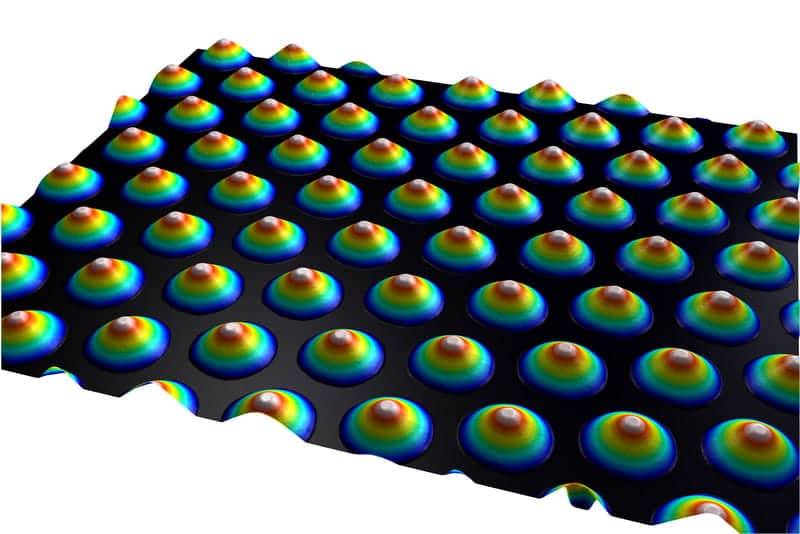
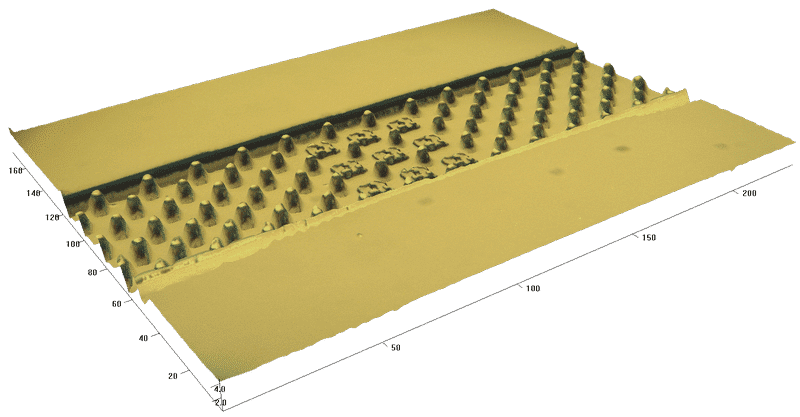
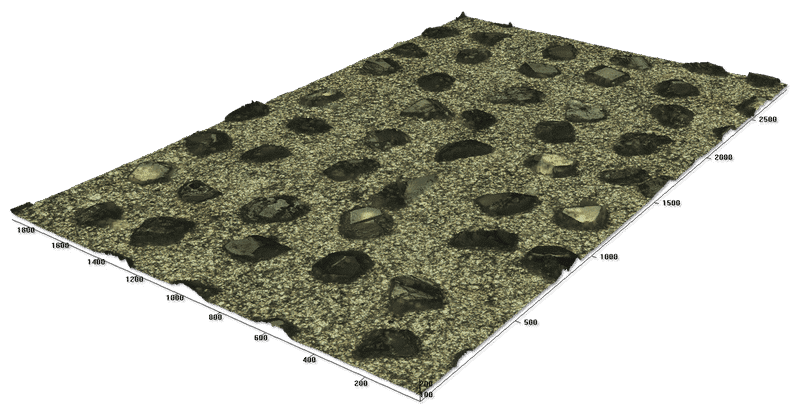
Opciones
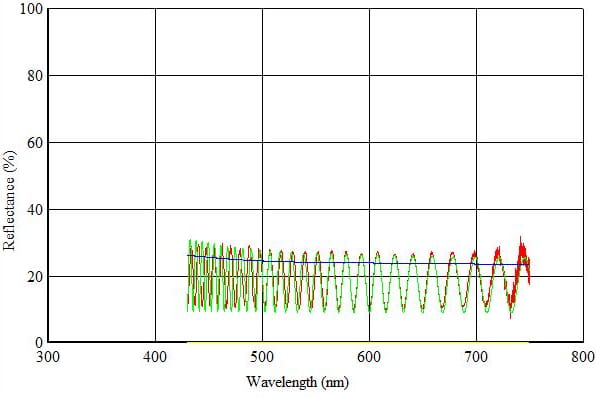
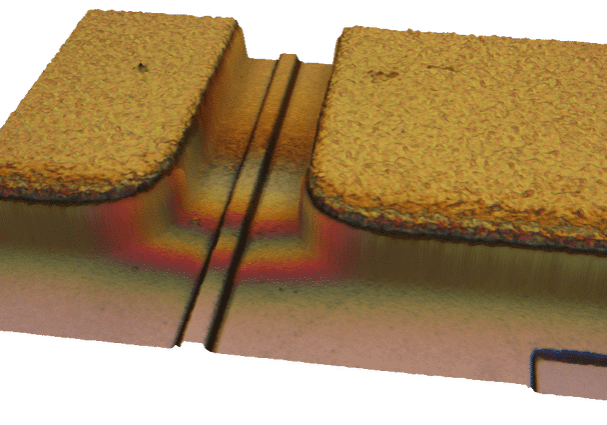
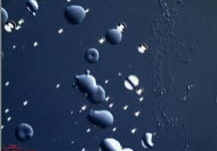
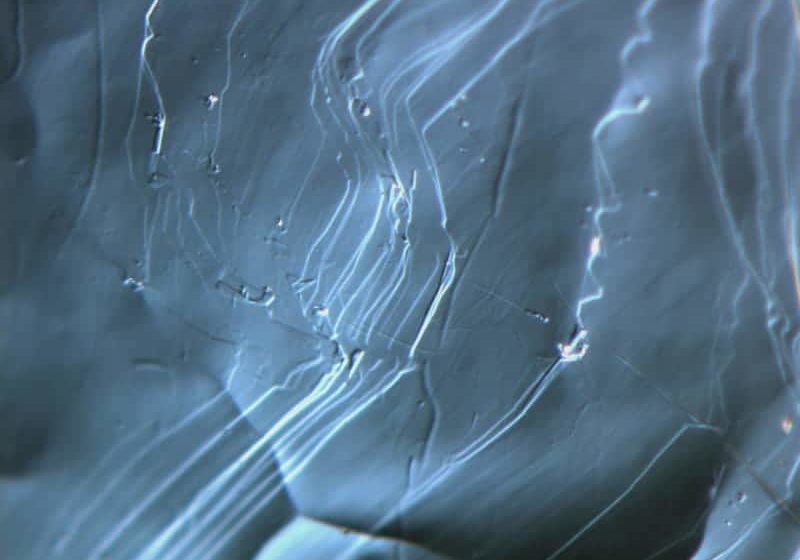
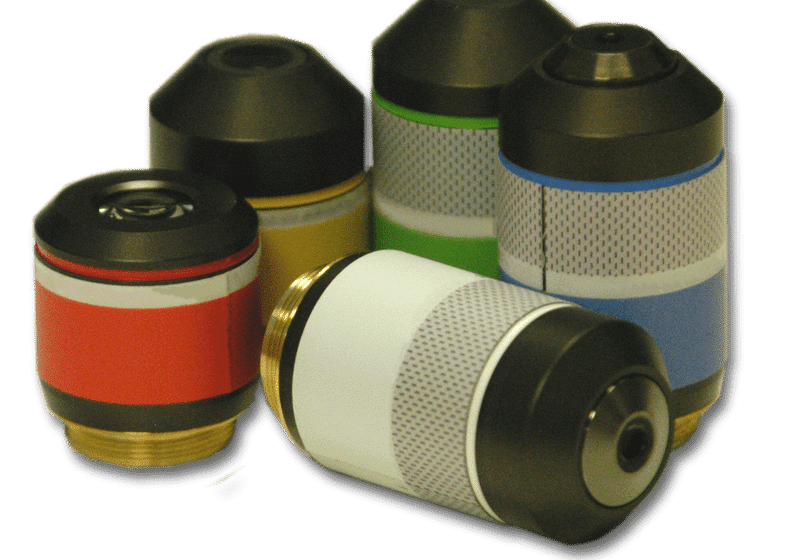
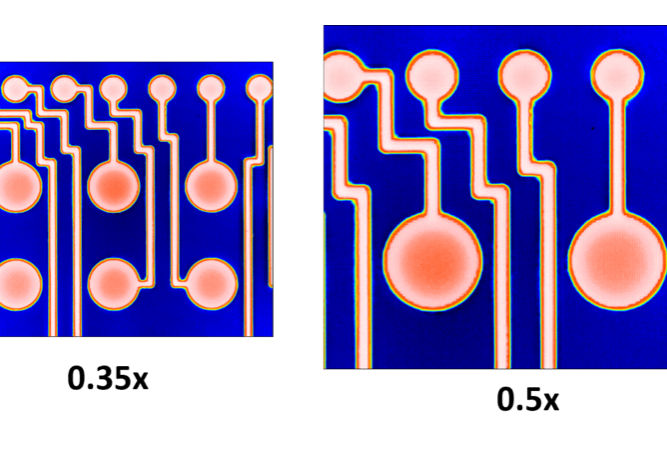
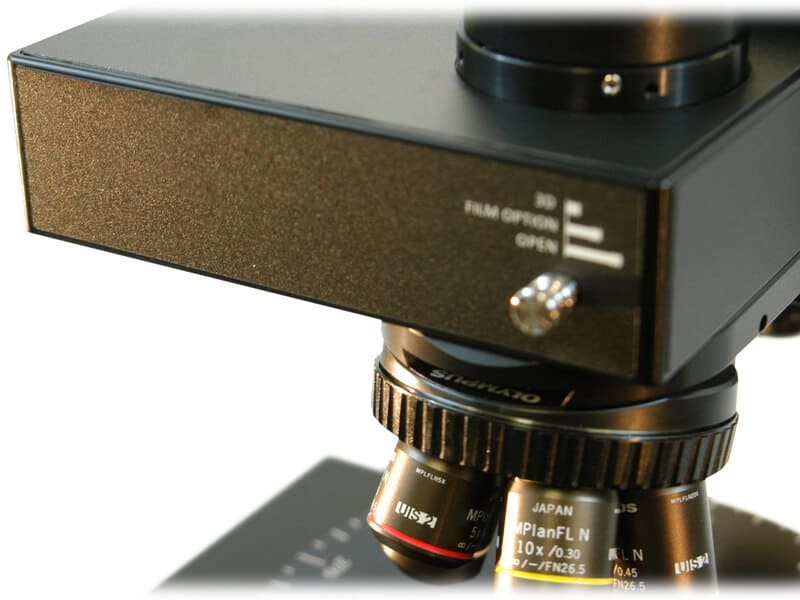
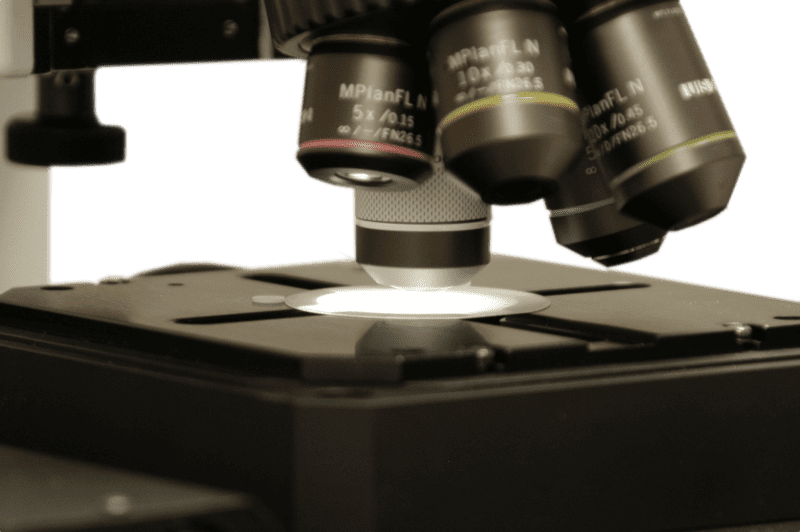
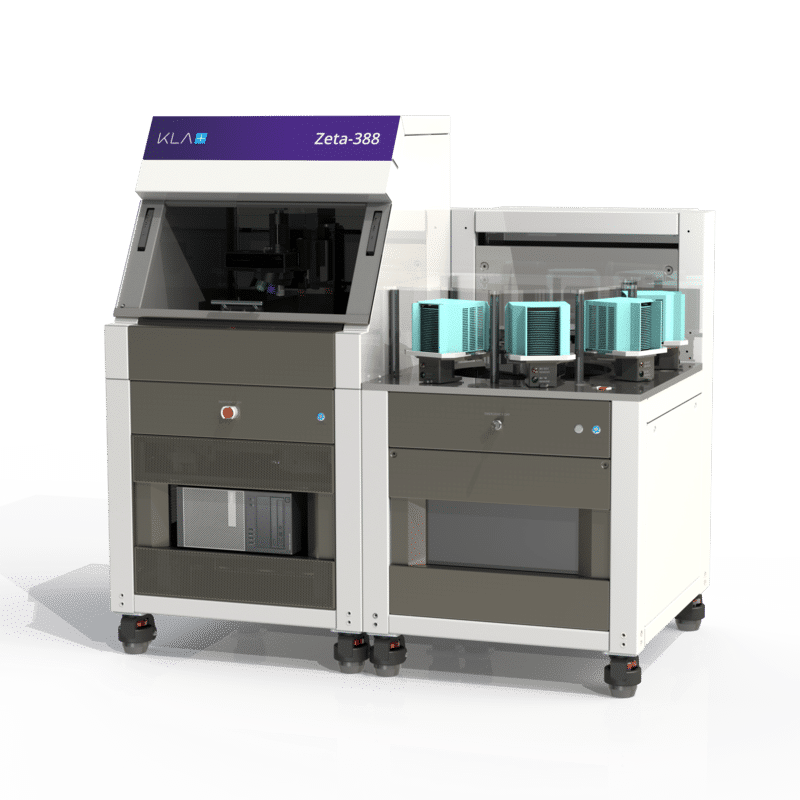


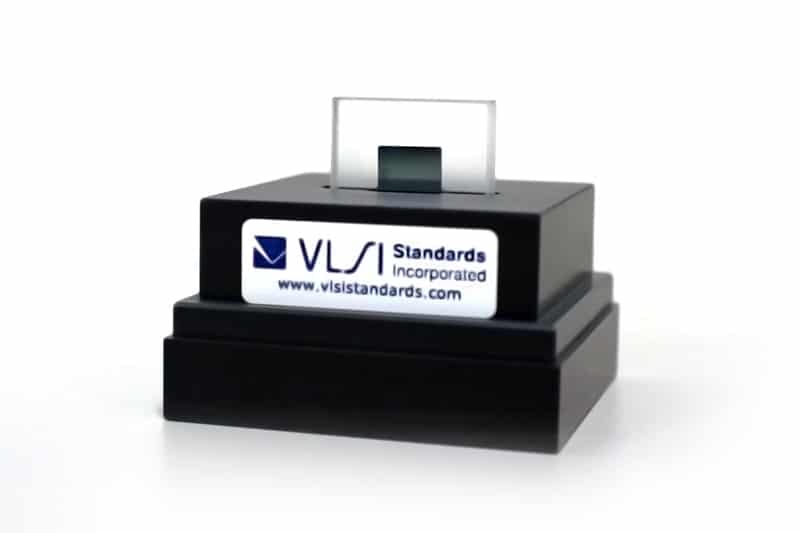

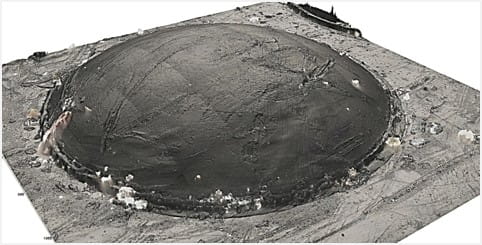
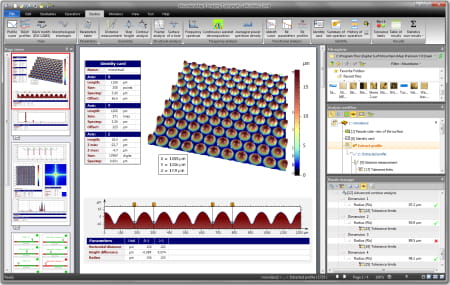
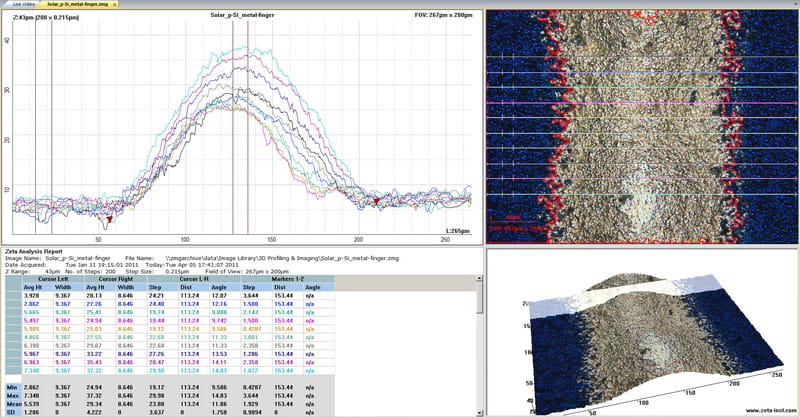
ZFT: Zeta film thickness
The Zeta-388 offers an integrated broadband spectrometer for measurements of transparent thin film thickness from 30 nm to 100 µm. It is capable of measuring the thickness of a monolayer or multilayer stacking film, the user selecting the refractive index values from the material library. The thickness of the film can be mapped on the sample to determine the uniformity of the sample.
ZFT works on some of the least reflective surfaces, such as samples with a reflectance of less than 0.1%. Many film thickness tools have trouble getting a signal from these types of surfaces because they depend on reflected specular light to calculate the phase change or other parameters. Broadband white light and normal incidence lighting allow the tool to be used for a variety of low-reflectance optically transparent films.
ZXI: Zeta vertical scanning interferometry
The Zeta-388 supports phase scanning interferometry (PSI) and vertical scanning interferometry (VSI) when paired with the piezo stage and an interferometric objective. The PSI allows rapid measurements of pitch heights ranging from angstroms to hundreds of nanometers. The VSI allows you to measure step heights from several hundred nanometers to several hundred microns. Both are performed at a resolution better than a nanometer, regardless of the numerical aperture of the lens
ZIC: Zeta interference contrast
The Zeta-388 uses Nomarski differential interference contrast microscopy to provide improved imaging of fine surface details. Nomarski microscopy uses polarization and a prism to change the phase to improve the slope changes on the surface of the sample. This makes it possible to visualize the defects on super-smooth surfaces, such as the monolayer of a contaminant. The ZIC scanning mode can convert these images into quantitative measurements of roughness below the nanometer level by correlating the change in slope with the roughness measured by another technique.
ZSI: Zeta shear interferometer
The Zeta-388 Shear Interferometer (ZSI) measurement technique improves the measurement of ZIC by adding a phase change. Several images are collected with different phases, then processed using advanced algorithms to generate a quantitative measure of the surface topography with a resolution at angstrom level. This technique does not require interferometric objectives and does not include Z-phase scanning, which makes it possible to obtain high resolution measurements ranging from angstroms to 80 nm.
Objective lenses
A wide range of objectives is available, including normal objectives from 1.25x to 150x, long working distance objectives, ultra-long working distance objectives, corrected refractive index objectives, objectives transmissive, liquid immersion objectives and vertical scanning interferometry objectives.
The Zeta-388 can be configured with four different optical couplers to change the optical magnification. The system can be configured with the 1x coupler to keep the native magnification or with 0.35x, 0.5x or 0.63x couplers to increase the magnification.
Objective turret
The Zeta-388 can be configured with a 5- or 6-position manual turret and a lens sensor for automatic lens identification. The system can also be configured with a 6-position motorized turret for fully automated operation.
Lighting sample
The Zeta-388 uses two high brightness white LEDs as standard lighting. Backlighting through the sample core is also available to enhance the light of difficult transparent samples, such as patterned sapphire (PSS) substrates. The Zeta-388 also supports side dark background lighting.
Stages
Sample plate
The Zeta-388 offers a range of plates available to meet application requirements for samples from 50 to 200 mm, including plates to support bow inserts. Backlight plates are available for transparent substrates to support the transmitted light required for patterned sapphire substrates.
Insulation tables
The Zeta-388 has passive isolation built into the base of the system. For applications requiring better insulation, an active insulation table is available. The Zeta-388 has a standard speaker to isolate the system from ambient noise and to protect the user from the movements of the sample manager.
The Zeta-388 uses the NIST traceable height standards in thin and thick layers proposed by the VLSI standards. The standards include an engraved quartz step with a chrome coating. A step height range of 8 nm to 250 µm is available.
A certified multi-stage standard available at nominal step heights of 8, 25, 50 and 100 µm. The standard includes various height models for XY calibration. A certified film thickness standard is available for ZFT. It includes a reference silicon surface and a nominal thickness of silicon dioxide film of 270 nm. Roughness and reference mirror samples are also available.
Automated sequencing software
The automatic sequencing software uses the motorized XY stage to allow the user to program the measurement locations on the sample. The system will automatically measure each site and record the results in user defined folders. An output report with sample statistics is generated to summarize the results.
Advanced sequencing software includes pattern recognition to automatically align the sample. This allows fully automated measurements, reducing the impact of operator error. Automatic calibration can also be enabled when using standards integrated on the stage.
Assembly software
Automated image stitching software uses the motorized XY stage to combine adjacent scans to generate an assembled dataset larger than a single field of view. The system automatically measures each site, aligns the images and combines them into a single dataset. The results can be analyzed like any other results file.
Apex analysis software
Apex analysis software enhances the standard data analysis capability of the tool with an extensive suite of leveling, filtering, step height, roughness and surface topography analysis techniques. Apex supports ISO roughness calculation methods as well as local standards such as ASME. Apex also serves as a reporting platform with the ability to add text, annotations and pass / fail criteria. Apex is available in eight languages.
Offline analysis software
Zeta-388 offline software has the same data analysis and recipe creation capabilities as the tool. This allows the user to create recipes and analyze data without using precious time.
Contáctenos para más información sobre este producto
¿Quieres una estimación?
¿Información Adicional?
Le responderemos dentro de las 24 horas.




